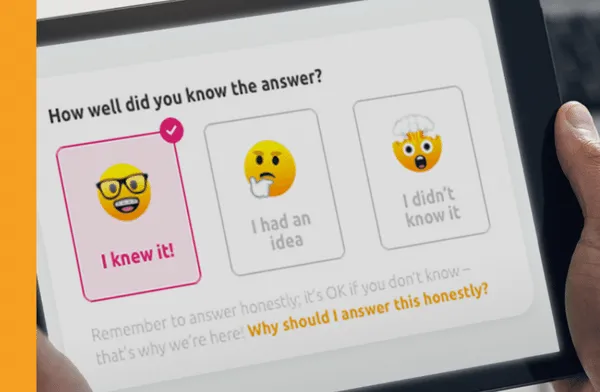
Mastering Employee Training Assessments: 10 Steps for Success
In the realm of Learning and Development (L&D), nailing employee training assessments is crucial for success. It’s not just about measuring training program effectiveness or knowledge retention. It’s a deeper endeavor that aligns personal growth with organizational goals, ensuring a win-win investment and outcome relationship.
As a leader in L&D, crafting these assessments is a big responsibility, and there’s no room for error. That said, let me share a 10-step plan that I truly believe can take your assessments from functional tools to game-changers for success.
Step 1: Set Clear, Measurable Goals
Training without clear objectives is like sailing without a compass. Starting with well-defined goals not only sets the direction but also helps you measure the outcome effectively. When these goals are specific, measurable, achievable, relevant, and time-bound (SMART), you can directly link training to business outcomes – the holy grail of L&D.
Step 2: Understand Your Audience
When it comes to assessment, it’s crucial to tailor it to cater to the diverse range of learners. Understanding their roles, experiences, and learning needs is key. We should create assessments that aren’t just evaluative, but also educational, putting ourselves in the employees’ shoes.
Step 3: Employ a Variety of Assessment Methods
Relying solely on one assessment method can result in skewed data. So, it’s important to mix things up with quizzes, hands-on demos, peer feedback, and self-evaluations. This way, we cater to various learning styles and get a complete picture of someone’s abilities.
Step 4: Prioritize Feedback Mechanisms
The purpose of assessments should never be limited to just grading. They should be platforms for feedback that encourage growth. Constructive, timely, and actionable feedback can be a game-changer for improvement and learning.
Step 5: Encourage Reflective Practices
Reflection is a key part of learning. When employees reflect on an assessment, it helps them recognize their strengths and areas for growth. This self-analytical approach can empower them to take charge of their learning journey.
Step 6: Analyze Data to Inform Training
After the assessment, it’s time to buckle down and get to work. The data we gather from assessments is crucial in shaping our future training content, formats, and methodologies. By analyzing trends and patterns in the data, we can identify both the wins and areas where our training needs improvement.
Step 7: Foster an Environment of Continuous Learning
Assessment shouldn’t be the end of the learning journey. Instead, it should be a continuous cycle. When we see assessments as a part of our growth path, it takes away the sense of finality and the anxiety that comes with it.
Step 8: Leverage Technology for Adaptive Learning
Today, we have the amazing luxury of adaptive learning systems. By leveraging the power of AI and data analytics, we can create assessments that adapt to your level of mastery. This leads to personalized learning experiences that are super effective!
Step 9: Align Assessments with Organizational Culture
For assessments to really click with employees, they need to embody the values and culture of the organization. This way, employees see them as an investment in the company’s vision, rather than just a tick-box exercise.
Step 10: Champion Transparency and Trust
Finally, the key to successful training assessments lies in being transparent and building trust. It’s important for employees to understand why they’re being assessed, how it impacts their careers, and how the data will be used. Ensuring confidentiality and ethical use of assessment data are non-negotiable principles that will establish trust in the assessment process.
Conclusion
These ten steps, although not exhaustive, are the foundation for effective and successful employee training assessments. When executed diligently, they have the potential to revolutionize employee learning and development.
Remember, at the heart of an assessment is not just understanding the impact of training, but understanding people. Your employees aren’t just participants in training; they’re the lifeblood of your organization. When they grow, the organization grows.
So let’s recommit ourselves to mastering the art of creating assessments that not only measure, but more importantly, facilitate learning. Because when our assessments truly reflect a genuine desire to unlock every employee’s potential, we come closer to achieving the ultimate triumph in L&D—real, measurable, and sustainable human progress within our organizations.
Frequently Asked Questions (FAQs) About Enhancing Employee Training Assessments
Q: How can we ensure that the training assessment aligns with our organizational goals?
A: Regularly review and update your assessment criteria to reflect organizational objectives. Ensure that both trainers and employees understand how the assessments tie into the broader company vision and strategy.
Q: What methods can we use to measure the effectiveness of our training programs?
A: Combine various assessment tools such as quizzes, practical tasks, peer reviews, and self-assessments to get a comprehensive view. Use Key Performance Indicators (KPIs) relevant to the training to measure outcomes.
Q: How can we prevent bias in our assessments?
A: Design assessments that are objective and standardized. Use blind assessment techniques if possible, train your assessors to recognize and mitigate biases, and conduct regular audits to identify any patterns of unfair assessment.
Q: How can we use technology to improve training assessments?
A: Leverage digital platforms for creating interactive and engaging assessments. Utilize a microlearning platform to track progress, give instant feedback, and analyze results for a more personalized learning experience.
Q: How can assessments contribute to employee growth and career development?
A: Align assessment feedback with personalized career development plans. Use assessment results to identify skills gaps, create opportunities for growth, and recognize and reward achievements.
Enhance Staff Knowledge With Wranx Employee Training Assessments
Evaluate and measure the progress and skill level of your employees with our comprehensive assessments. These assessments are designed to gauge the knowledge of each team member, offering valuable insights for both you and your employees.
Track Progression with Employee Training Assessments – Prior to training your staff, and after
Wranx provides flexible knowledge measurement with pre and post assessments. Start with multiple-choice assessments before training modules to establish baseline knowledge, and then after completing the training to gauge how much knowledge you’ve gained. These assessments, both before and after training, always show significant score improvement, proving that the training really works.
Key Benefits
- Tailor-Made Assessments: Customize assessments to align with your specific goals and objectives.
- Enhanced Performance: Learners can witness their knowledge improvement after completing training modules.
- Real-Time Analytics: Access detailed analytics and reports to identify strengths, weaknesses, track progress, and make informed decisions.
“We are extremely satisfied with the services provided by Wranx. The valuable insights from the six-week Wranx training program have guided the development of future communication and educational opportunities. Furthermore, we have identified knowledge gaps for additional education and areas where refresher training would be required in the future.”
Joseph Guillory, State Sales Trainer, IGT
Read IGT’s training success story here.
Why Choose Wranx Employee Training Assessments?
While training your employees is crucial, ensuring their retention of the shared information is equally important. We understand the all-too-common scenario where employees attend training sessions but fail to recall the necessary information when needed.
With Wranx, you can guarantee long-term knowledge retention. Our training assessments allow you to measure the increase in your employees’ knowledge accurately. This not only motivates continuous learning but also enables you to demonstrate the return on investment (ROI) of your training initiatives to business leaders.



